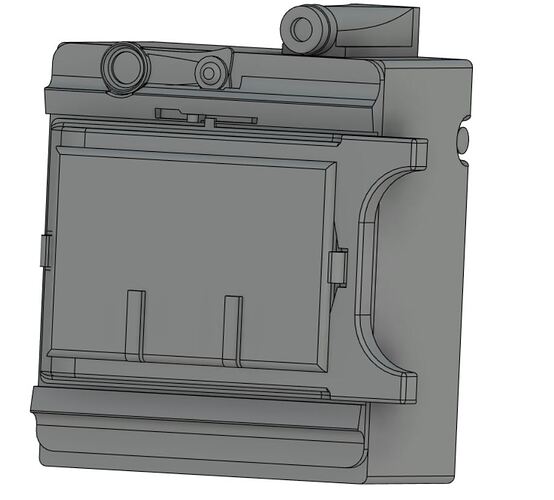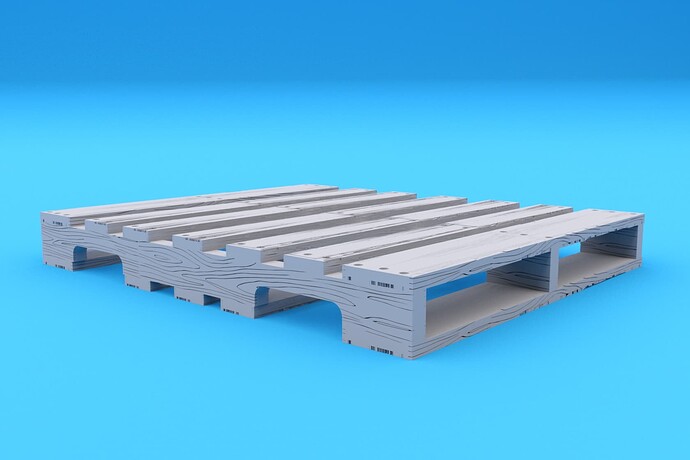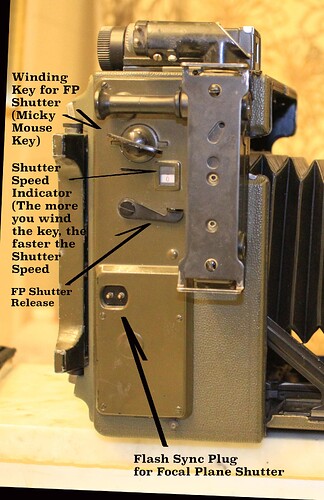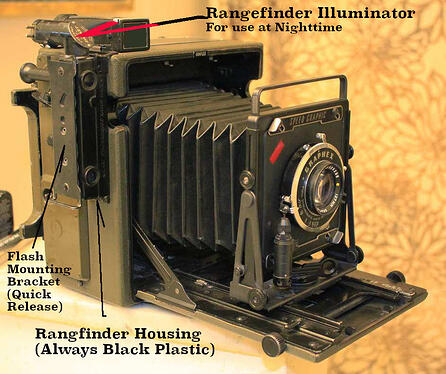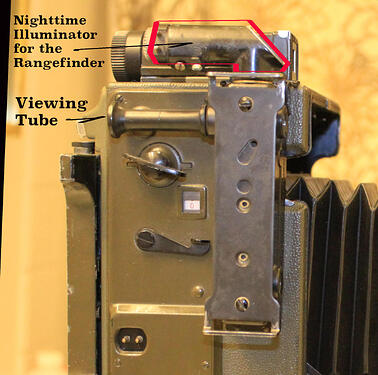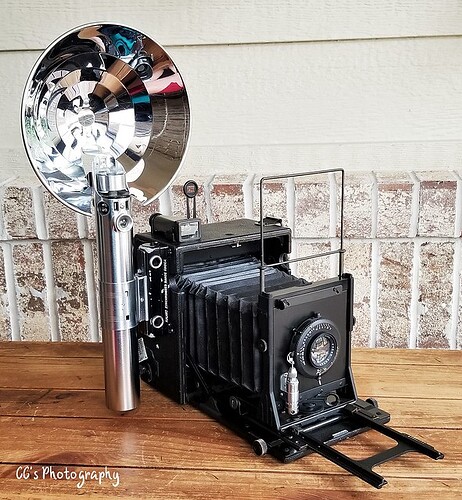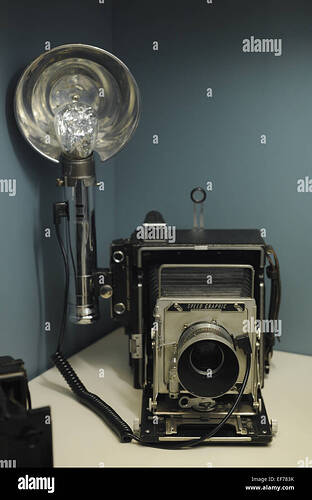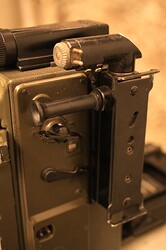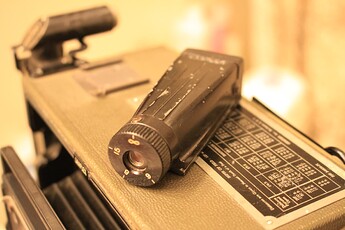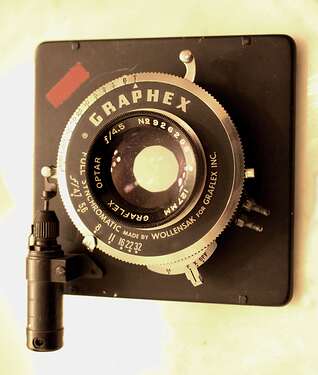That reverse perspective is your brain trying to make sense of the image not tapering to a point. No matter how much we understand what’s going on, the part of our brain that processes the stereo image from our eyes still struggles. I’ve been driving CAD for over three decades now and still see things apparently tapering out as they go away…
You are no doubt correct. Have not looked at an isometric in many MANY years
It’s not pencil to vellum anymore and it’s not spending hours in a photo darkroom anymore… Thankfully, those days are over!
To those who are designing 3D, I salute you. ![]()
—mike
I agreed! Ditto
Photo processing at my computer is way more fun than the darkroom ever was AND I have so much more control.
OK some work done on the Graflex and an updated wood pallet. I just need to do a test print for the pallet but otherwise it will be $10.46 for a pack of 2 printed at 50 microns or $7.16 for a pack of 2 printed at 100 microns. I’ll print a test of both so everyone can have see the difference between them.
Back of camera looks good.
I will get you a shot of the right side of the camera body with all the focal plane shutter controls and the rangefinder. That is what will turn this Graflex into a Speed Graphic.
The focal plane shutter built into the rear of the camera provided faster shutter speeds than the in-the-lens shutter. Better for stopping fast action sports and racing photography. However the, front mount, in-the-lens shutter worked better when doing flash, or regular Press type photography.
There is a good chance the Army Combat Photographers did not even use the Speed as it was more complex, something else subject to break down and too, the in-the-lens shutter would handle 98-99% of what these guys were needing to shoot. I just wish Halloran or Joe Karr were still around to ask!
(If I were shooting the Iowa firing a salvo, or a TBM catching the arresting cable on the flight deck the Lexington I would want to be using a Speed Graphic but for sitting in a Foxhole photographing slow moving Shermans and Panzers doing battle or for regular Press coverage of Eisenhower or Patton’s arrival the more simple Graflex would be all that was needed.)
Mike I saw your attempt above to do a realistic modern GI helmet. Good job!
How 'bout giving us a source for a good after market WWII helmet covered in netting with the leather band across the brim and the chin straps hanging loose?
I wish I had one for the GI Combat Photographer figure I am building right now!
It’s in the plans. I just need to aquire one.
p.s. FYI ~ Even the lowly Graflex still had the rangefinder housing mounted on the right side of the camera body for precision focusing, (when time and subject allowed for it.) Otherwise you were estimating distance to subject by eye and setting your camera accordingly.
I can photograph my helmet but that does not help you if you are wanting to scan one.
I could ship it to you on loan if you think that is justified?
If that works for you sure. Scanning is thankfully significantly faster than designing from scratch like what I’m doing with the LTAS for Gino. I still have a kit on loan from him to use as a base fit test. I need to finish that up before I start accruing interest on it.
On this part, though, what I can do is model the parts for both and then only include the parts that apply to the separate models. That way they both can be available without having to redo the camera.
Some side details of the Speed are indentions rather than add-ons.
Again the rangefinder belongs on both cameras.
Items that differentiate the more simple Graflex from the more expensive Speed Graphic:
These additions pointed out above are what make the “Speed Graphic” a Speed.
This may be TMI but this particular Rangefinder is the Deluxe Version
-
#1. It has the little viewing tube that makes it somewhat easier to use in daylight.
-
#2. It has the Rangefinder Illuminator that makes it much easier to use in the nighttime. (This illuminator would run off the batteries in the flash unit (3 “D” Cells) using an extra flash sync cord as the connection.- Probably only available on the Speed.
Can you get me the dimensions (length, width, and height) for the rangefinder housing? I’ve also seen a number of different flashes for the camera but I’m not sure which one is used. I’ve seen mounts with only 1 square protrusion and I’ve seen mounts with 2 protrusions. I’m assuming that it would be closer to picture one instead of the others but I want to make sure before I set it down.
Like this:
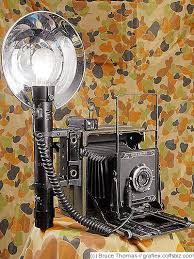
And this:
And this:
Sure I will get you measurements on the RF.
Cannot say which flash mount was more common in WWII but the one with two connect points (one high & one low) is the most secure and easiest to use.
The connection is physically very secure but you can quickly grab the flash battery housing and with an easy push of one thumb release button you can pull the flash unit off the camera and hold it above your head or way to the right side to produce a softer more flattering lighting. Or lighting that will better delineate your subject.
Based on the mechanical design schemes seen with each of these flash mounts I would guess the one I like the most (and the one I have used the most - shown in your first photo) to maybe be post-war. All three cameras I have owned had that mount but then I too am post-war.
I will try and find an “official” answer.
- Height 4"
- Width 1" (Ya think maybe this was
- Depth 1" built to US standards?)
Stamped Metal Housing built by KALART - a sub-contractor.
(They were well known for their line of engineering grade rangefinders and optical distance measuring devices.)
Postwar some rangefinders were mounted on top of the camera and came in a molded plastic housing.
